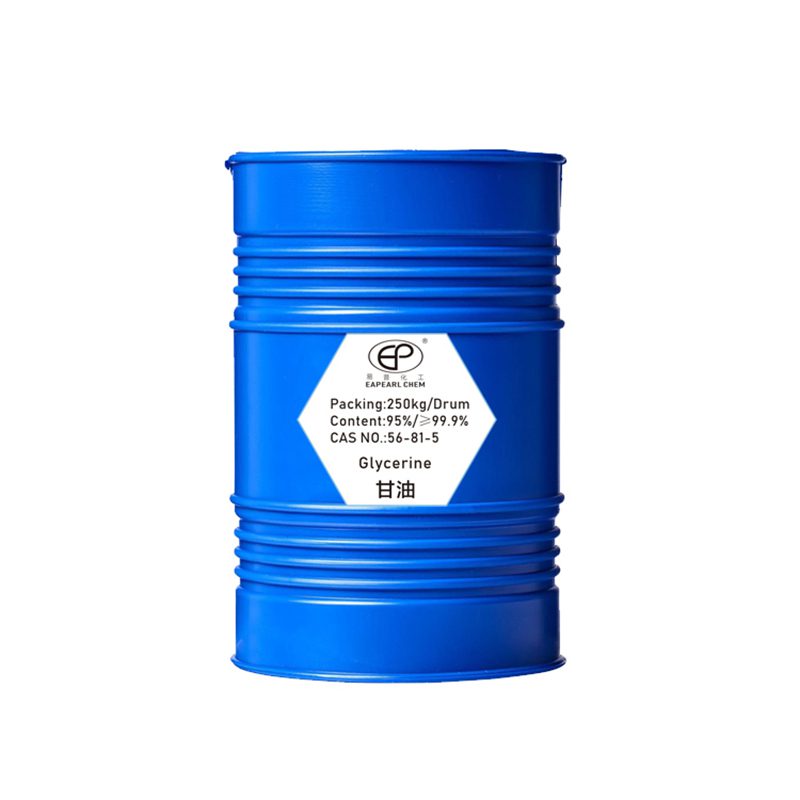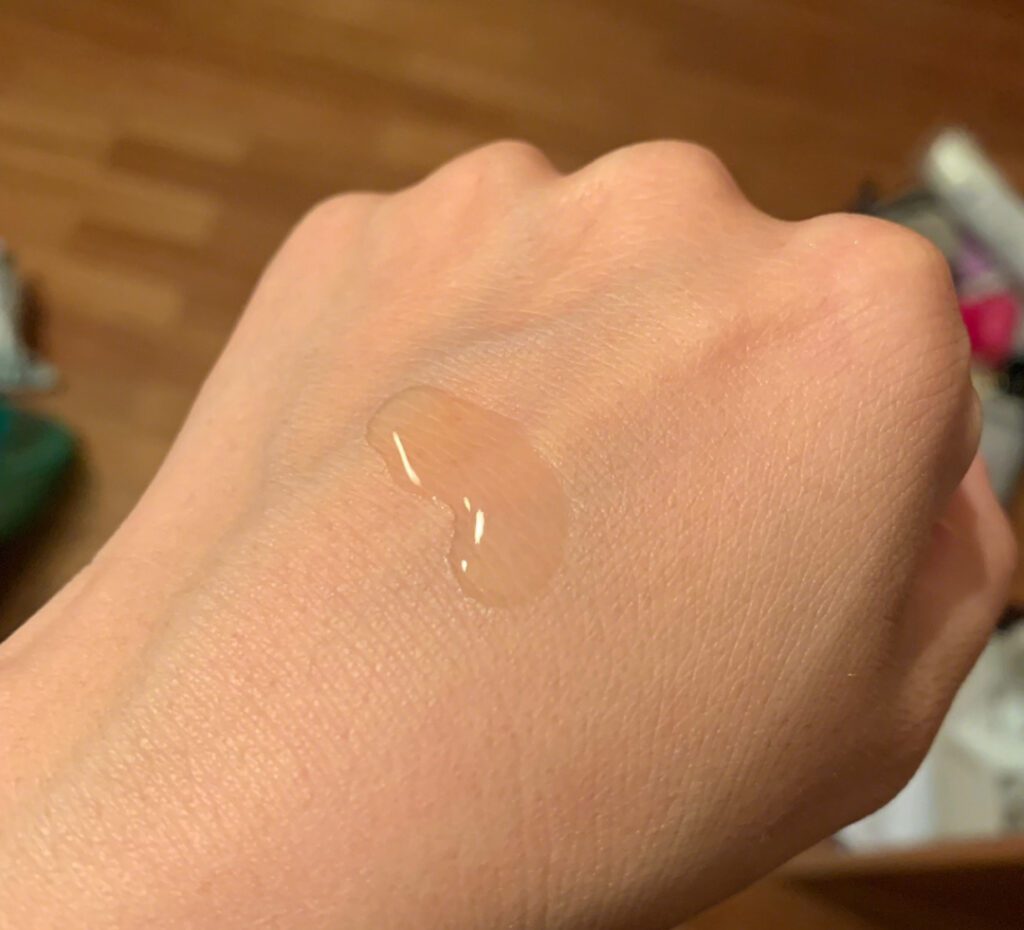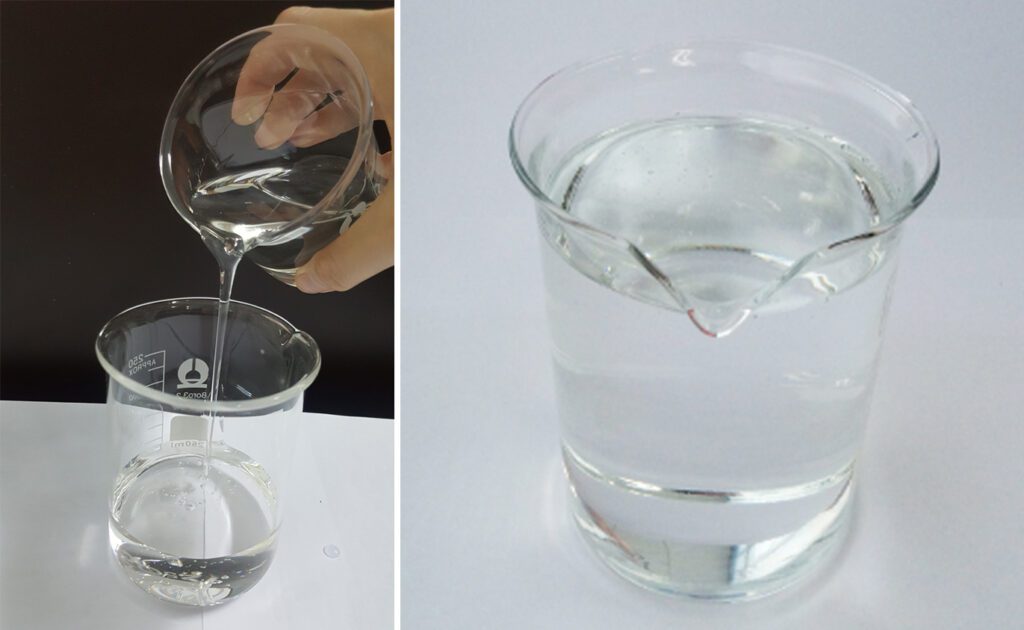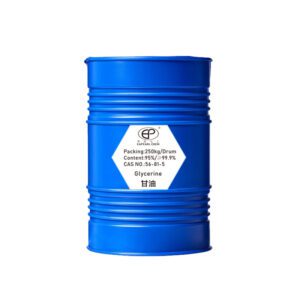

Glycerol is a well-known moisturizing agent, renowned for its affordability. Glycerol possesses an average capacity to absorb and retain moisture over a prolonged period. However, it is cheap, user-friendly, safe, and a common ingredient in low-cost and high-end products.
Let’s discuss some key points about moisturization:


1. Dynamic moisturization: Glycerol does not release water once absorbed. Dynamic moisturization allows adjustments to moisture levels based on the surrounding environment. If the skin lacks water, the moisturizer will release the absorbed water. Conversely, if the skin already contains sufficient water, the moisturizer will no longer absorb more. Similar to hyaluronic acid and betaine humectant, Glycerol can adapt to the moisture level of the skin and provide a mild skin feel.
2. Hydration: Many individuals mistakenly mention hydration. The skin does not directly absorb water, on the contrary, water evaporates from the surface of the skin. Hence, the notion of hydration is incorrect.
Now, let’s consider some important points when using Glycerol:
1. As mentioned earlier, Glycerol alone cannot effectively moisturize, so I generally do not recommend its use in dry climates. In such cases, Glycerol may draw water from the skin, leading to imbalance.
2. If you solely use Glycerol without a body lotion, it will not provide a natural moisturizing effect. Because body lotion contains oil, it can form a protective layer on the skin to prevent moisture evaporation.
3. The Glycerol available for purchase is typically not 100% pure but rather an aqueous solution diluted with water. This dilution is necessary as pure Glycerol can feel excessively sticky on the skin.
When using pure Glycerol, dilute it with water; otherwise, it will not only fail to hydrate but also deplete skin moisture.


The correct use of Glycerol can produce excellent results while maintaining low costs:
1. Moisturizing agent: Aqueous Glyceroll can be used as a moisturizing agent. However, as mentioned earlier, Glycerol alone cannot effectively lock in moisture. Therefore, after applying Glycerol, it is advisable to apply a second layer of body lotion.
2. Prevention of cracks on hands and feet: During autumn and winter, many individuals experience chapped hands and feet. In addition to hand cream, Glycerol can be used to prevent cracks. Adding allantoin to Glycerol enhances crack prevention.
Personally, I keep a bottle of Glycerol in the office and I use it with hand cream every morning and evening to apply it to my hands. Even in harsh winters, my hands remain well-moisturized through this routine.


3. Prevention of lip cracks: Many individuals use lip balm, which often contains Glycerol, as it is highly effective. However, it is important to be careful and avoid ingesting lip balm.
Let’s debunk some rumors about Glycerol:
1.Facial yellowing: Although Glycerol is a yellowing liquid, it does not cause skin yellowing.
2. Pigmentation: There have been no reported cases of Glycerol causing pigmentation.


3. Homemade Glycerol: Some individuals suggest making homemade Glycerol. Although making Glycerol solution is relatively easy, it is susceptible to bacterial contamination and requires the use of preservatives. Obtaining preservatives can be challenging for the average person. If you decide to prepare homemade Glycerol, it is recommended to use a proportion of 30% Glycerol and minimize the quantity. Store it in the refrigerator and use it as soon as possible to ensure safety.
Apart from its role as a moisturizing ingredient, Glycerol serves as an excellent solvent. It enhances the elasticity of products and improves the skin’s absorption of other components. Glycerol is also commonly used as the primary ingredient in mild cleansers. Its fat-soluble nature helps remove excess oil from the skin.
Moreover, Glycerol exhibits good water solubility and is easy to rinse off. While not a surfactant, it can act as a cleaning agent. Glycerol is mild and rarely causes irritation or allergies. Additionally, it has a moisturizing effect, preventing the skin from feeling tight after cleansing sebum. Using a mild facial cleanser based on Glycerol ensures that excessive cleansing is avoided. However, such products generally do not produce foam, and some individuals may have reservations due to the misconception that foam indicates better cleansing. This foam concern is purely psychological and holds no merit. By increasing usage, cleaning efficacy can be improved.
These products are affordable and gentle on users. However, if desired, one can opt for slightly stronger cleansing products.
In short, Glycerol has high hygroscopic properties. Using skincare products containing Glycerol during winter helps maintain the skin’s moisture and softness. Applying Glycerol on the skin forms a protective film, shielding it from air exposure. This film reduces moisture evaporation while absorbing moisture from the air, effectively preventing skin dryness and cracks.
When using Glycerol, it is important to take precautions. Pure Glycerol alone should not be used. Most commercially available Glycerol is pure. Before use, dilute pure Glycerol with 40%-50% distilled or cold-boiled water, ensuring thorough mixing. It is not recommended to use Glycerol on broken skin as it can irritate the affected area.








